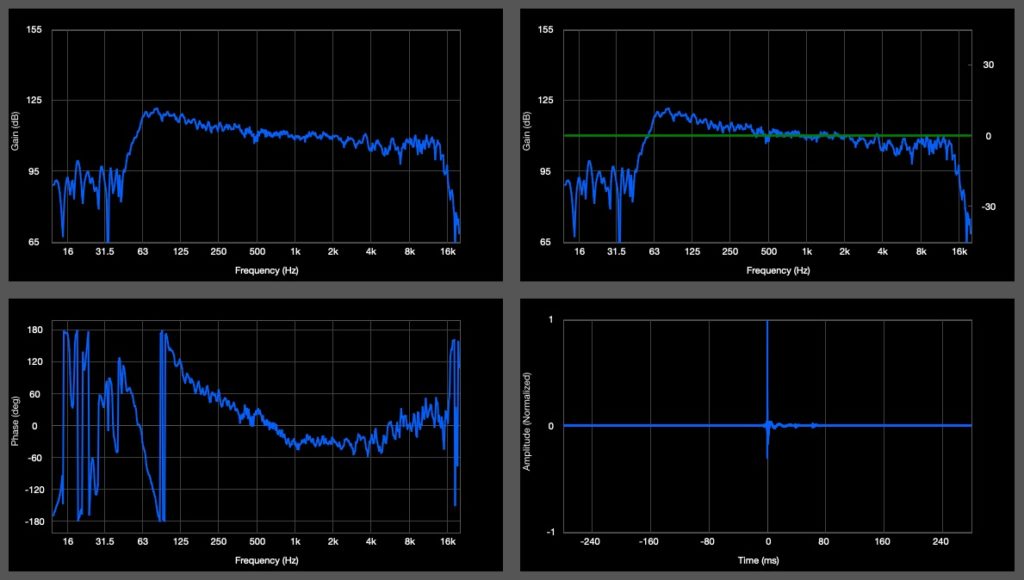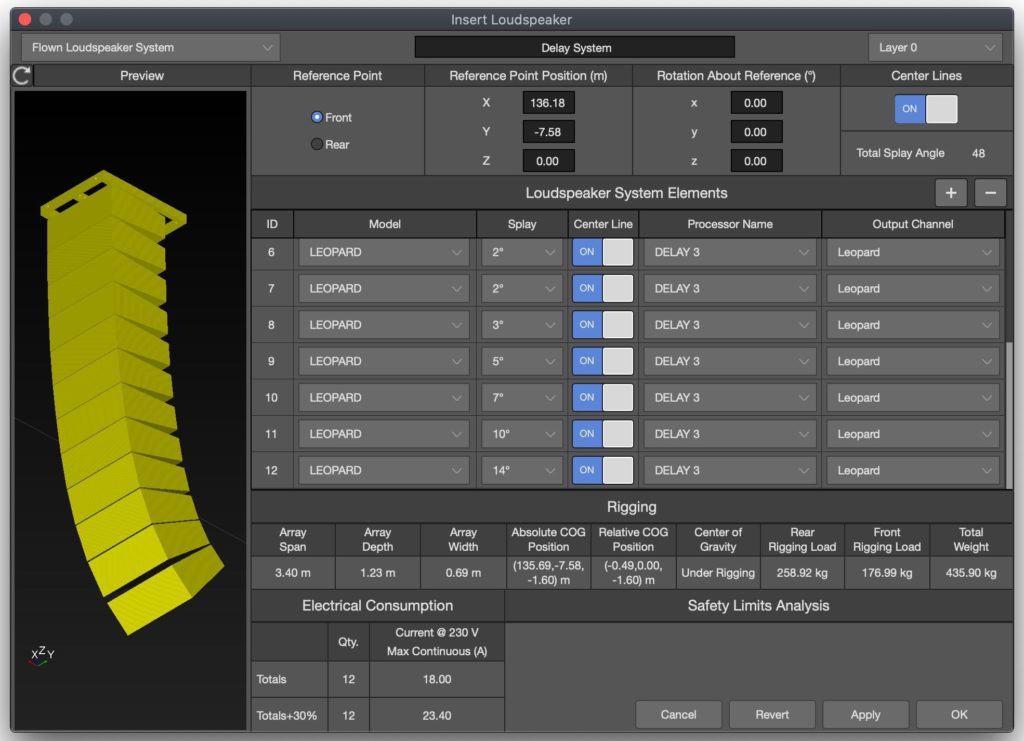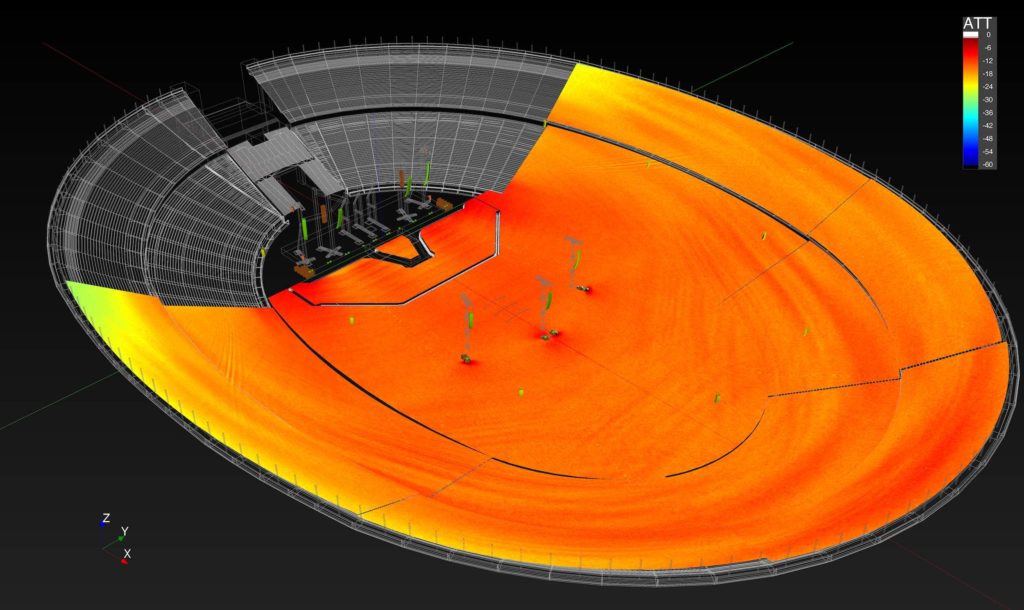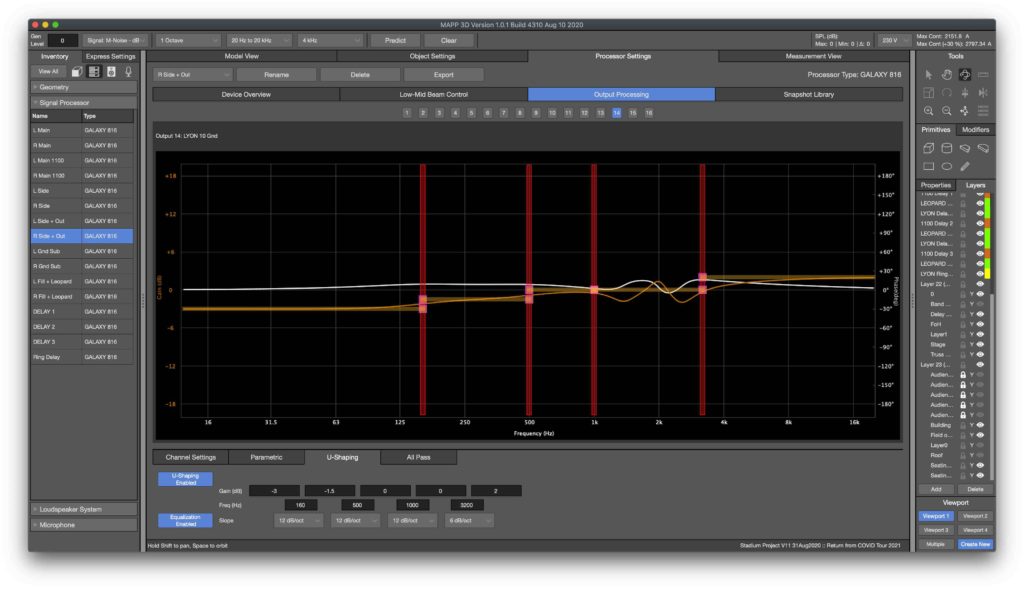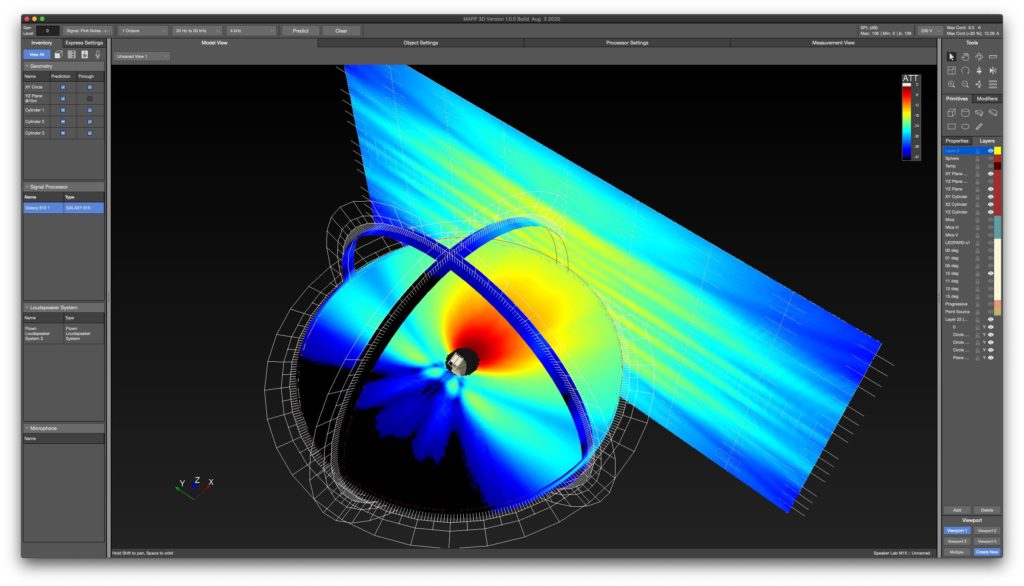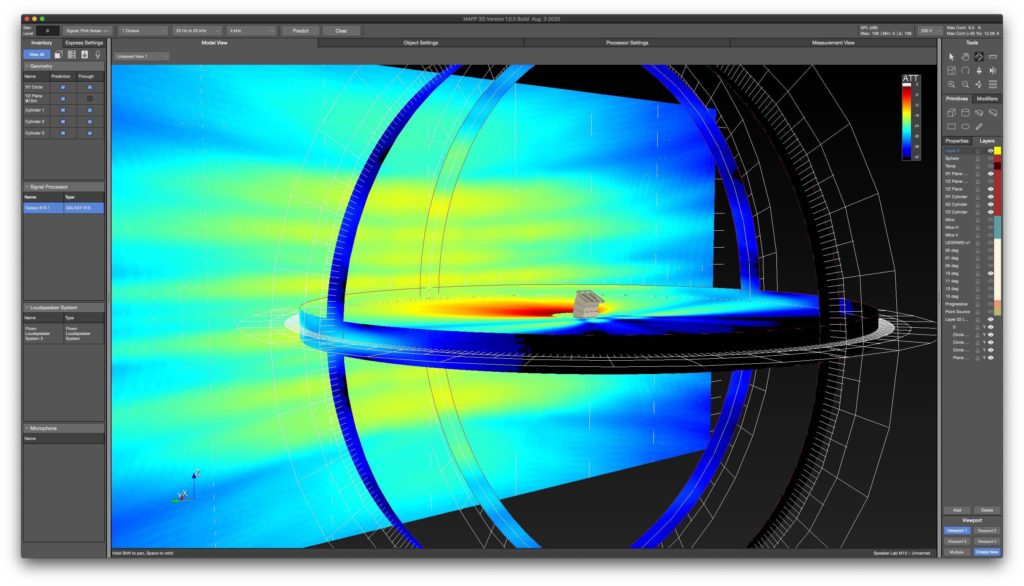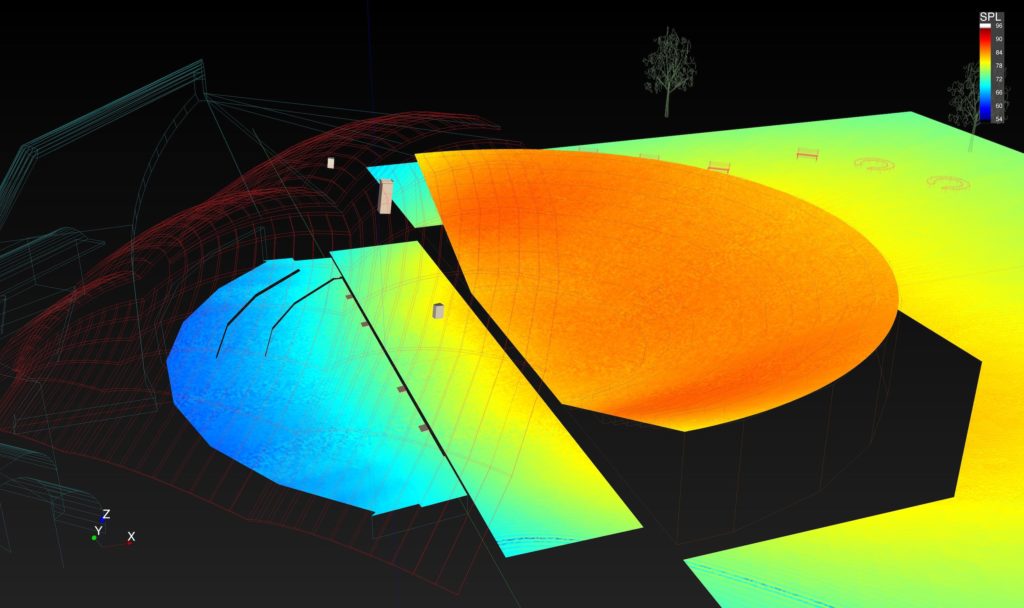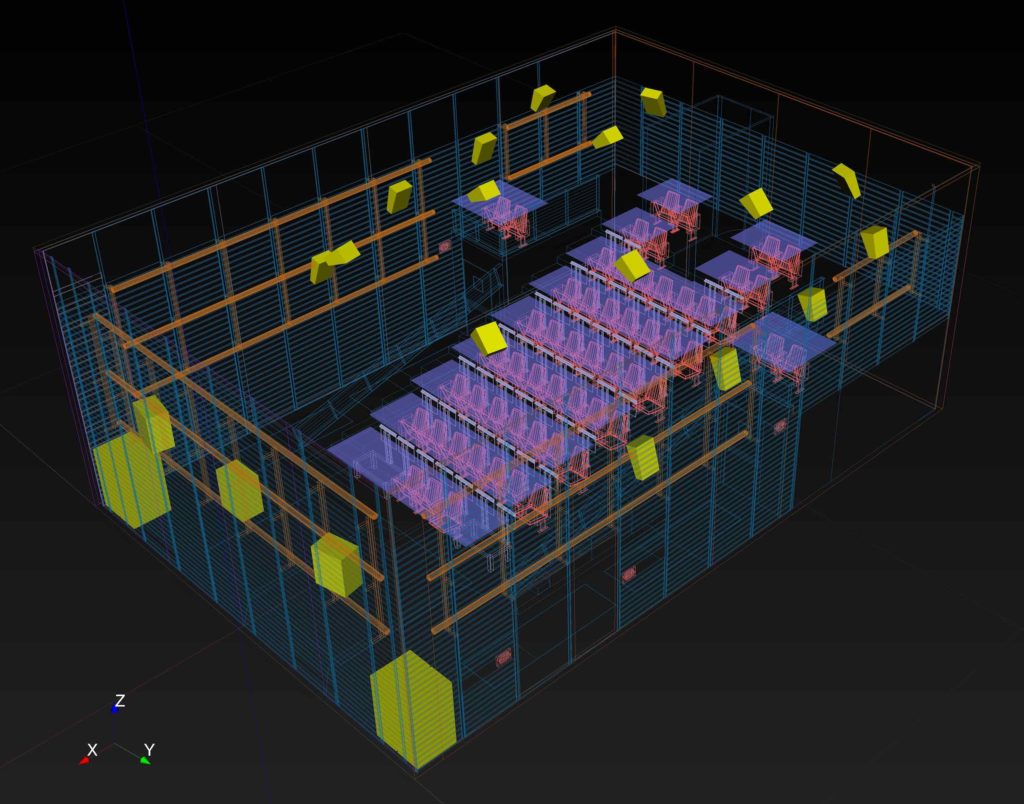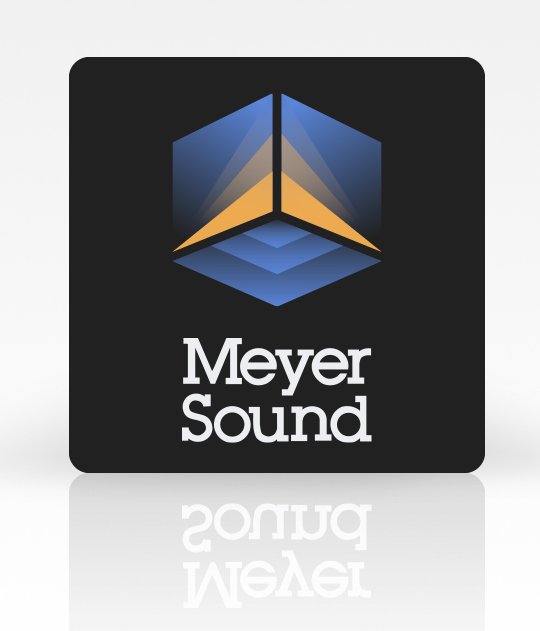premium
27 Oct 2020
Meyer Sound MAPP 3D
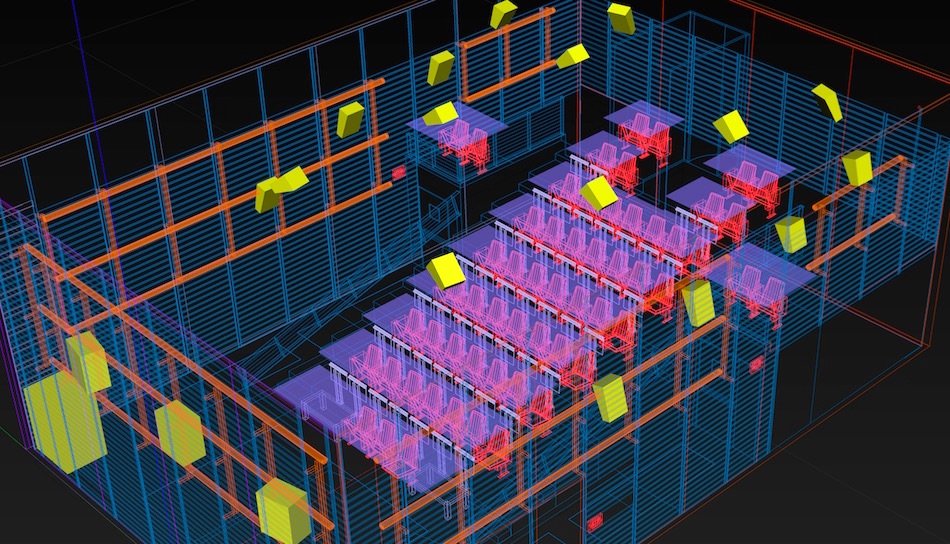
Subscribe to CX E-News
Software Tool Adds New Dimensions to Audio System Design
Meyer Sound has released MAPP 3D, the most extensive upgrade to its industry-standard system design tool since the original MAPP Online software program was introduced in 2001. MAPP 3D works on both Mac and Windows platforms, employs local processing (no Internet connection required) and is now available as a free download from the Meyer Sound website.
As the name implies, MAPP 3D provides highly accurate, three-dimensional renderings of predicted sound system performance within detailed, wire-frame venue drawings.
Equally important, MAPP 3D now offers complete integration with the GALAXY Network Platform and Compass control software for a seamless workflow from initial design through on-site tuning.
Comprehensive processing parameters for complex systems can be optimised using MAPP 3D predictions, with the resulting processor settings pushed directly into multiple GALAXY processors with the click of a mouse.
In addition to traditional calibration test signal sources, MAPP 3D supports M-Noise, an emerging industry standard to determine the maximum linear SPL for music.
This combination provides the industry’s most accurate prediction of a sound system’s maximum capability when reproducing music.
“The release of MAPP 3D marks a milestone in the development of sound system design software, not only for Meyer Sound, but for the industry as a whole,” says Perrin Meyer, Meyer Sound director of emerging technologies.
“The detail in the renderings is spectacular and the flexibility of the user interface is unprecedented, but what really sets MAPP 3D apart is the extreme accuracy of the predictions.
“What you measure with MAPP 3D’s virtual microphones is precisely what you will see in measurements from real microphones.”
The combination of a streamlined, user-friendly interface and seamless integration with GALAXY processors, and easy import of SketchUp (SKP) and AutoCAD (DXF) files, will afford significant time and cost savings in both system design and on-site optimisation.
With multiple views and fingertip control of a free-rotation tool, audience areas can be quickly defined, even within complex architecture. Line arrays can be quickly configured and automatically splayed for uniform coverage, and multiple system options can be evaluated simultaneously.
What you measure with MAPP 3D’s virtual microphones is precisely what you will see in measurements from real microphones
In addition, MAPP 3D enables system designers to perform virtual system optimisation in the design phase.
MAPP 3D includes virtual GALAXY signal processors, allowing the designer to add and configure processors, view prediction results, and later synchronise these settings directly to the hardware processors on site.
Complete output processing functions of all GALAXY processor models are available, and a copy and paste feature can be used to replicate settings in one or more other processing channels.
Because MAPP 3D includes precise sensitivity data for all Meyer Sound loudspeakers, it can display predictions as real-world SPL as well as attenuation.
The inclusion of sensitivity coupled with M-Noise compatibility also provides highly accurate predictions of system headroom. Accurate headroom predictions alleviate any tendency to overdesign systems, leading to greater cost efficiencies in the final specification.
MAPP 3D loudspeaker performance is based on more than 65,000 three-dimensional measurement points, taken in 1/48th-octave resolution in the Meyer Sound anechoic chamber.
Also, MAPP 3D predictions are accurate across the full bandwidth of all loudspeakers, including as low as 12.5 Hz for the VLFC very low-frequency control element.
MAPP 3D also leverages the inherent advantages of working with loudspeakers that are self-powered and manufactured to extremely tight tolerances for uniformity of performance.
“When working with predictions in MAPP 3D, you can be confident that your virtual loudspeakers will behave exactly as the physical models tested in the anechoic chamber,” says Todd Meier, Meyer Sound director of product management, “as will the loudspeakers in the final installed system.
“In addition, self-powering eliminates variables associated with external powering, such as amplifier type, amplifier output configuration and loudspeaker cable length — all of which add complexity and introduce a potential for error in other proprietary prediction tools.”
MAPP 3D loudspeaker performance is based on more than 65,000 three-dimensional measurement points, taken in 1/48th-octave resolution in the Meyer Sound anechoic chamber
The upgraded, high-resolution graphics and flexible user interface in MAPP 3D provide an array of options for design and performance analysis. System designers can insert simple 3D geometry to reveal array behaviour outside the audience area.
Layers can be turned on and off to speed workflow. Prediction planes are quickly created from imported drawings with a “Snapping” tool.
In addition, multiple prediction planes in large venues with symmetrical sections can be created quickly using linear and angular extrusion in combination with the “Mirror” and “Align” tools.
MAPP 3D is compatible with most recent computers running either Windows 10 or Mac OS versions 10.5.6 Catalina or later. A quad-core processor and at least 8 GB of RAM are recommended as well.
What are the differences between MAPP 3D and EASE?
• MAPP 3D is the most accurate tool available for predicting Meyer Sound loudspeaker performance in any venue design.
• MAPP 3D is the world’s only prediction tool to use M-noise, therefore is the only truly accurate way to predict a system’s performance with music content. EASE does not do this.
• EASE does not predict low frequencies, MAPP 3D does.
• EASE can predict acoustic performance since it does include the acoustics and materials of the venue. MAPP 3D does not do this, so as to reduce inaccuracies from within a model. EASE models must be built with very high levels of acoustic and materials accuracy to provide accurate acoustic performance prediction.
• All of the loudspeaker data used in EASE is provided by the manufacturers themselves (including Meyer Sound). There is no verification if this data is correct, therefore the predictions in EASE rely on the honesty of the loudspeaker manufacturers. All predictions and measurements in MAPP 3D can be field verified for accuracy.
• MAPP 3D interfaces with GALAXY processors creating a powerful workflow integration for system tuning and alignment. This is not possible with EASE.
Meyer Sound – https://meyersound.com
CX Magazine – October 2020
LIGHTING | AUDIO | VIDEO | STAGING | INTEGRATION
Entertainment technology news and issues for Australia and New Zealand
– in print and free online www.cxnetwork.com.au
© VCS Creative Publishing
Subscribe
Published monthly since 1991, our famous AV industry magazine is free for download or pay for print. Subscribers also receive CX News, our free weekly email with the latest industry news and jobs.

